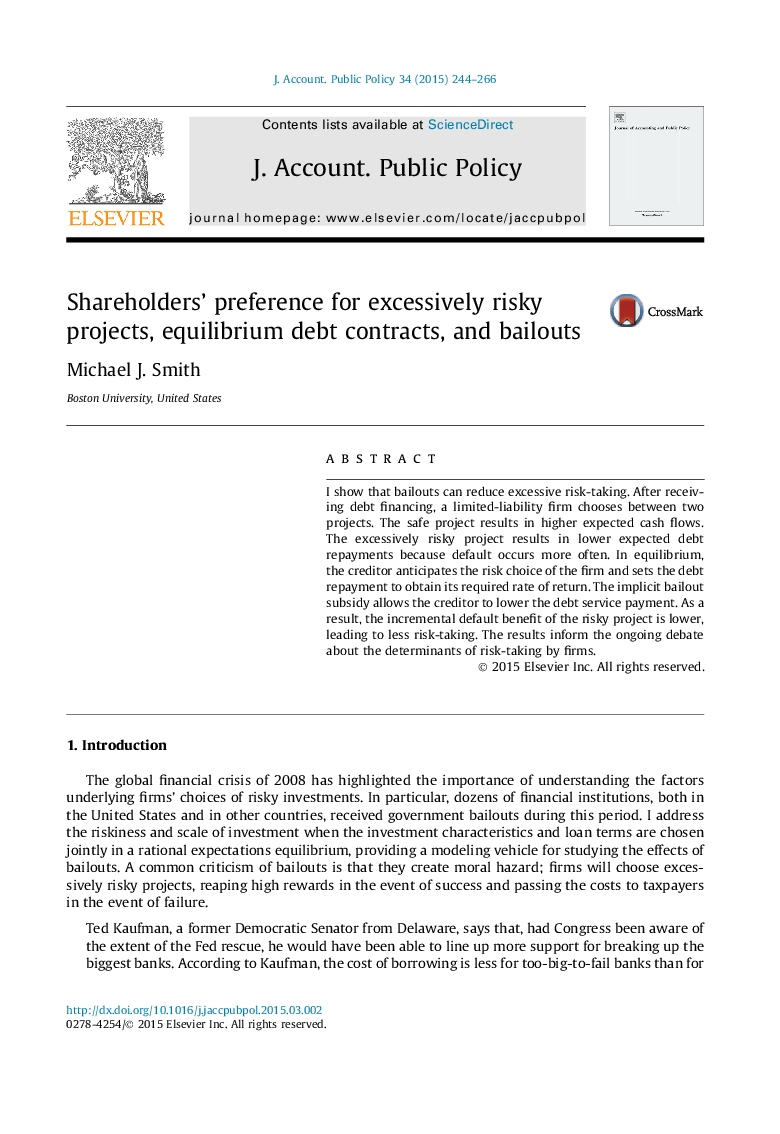| Article ID | Journal | Published Year | Pages | File Type |
|---|---|---|---|---|
| 1005745 | Journal of Accounting and Public Policy | 2015 | 23 Pages |
Abstract
I show that bailouts can reduce excessive risk-taking. After receiving debt financing, a limited-liability firm chooses between two projects. The safe project results in higher expected cash flows. The excessively risky project results in lower expected debt repayments because default occurs more often. In equilibrium, the creditor anticipates the risk choice of the firm and sets the debt repayment to obtain its required rate of return. The implicit bailout subsidy allows the creditor to lower the debt service payment. As a result, the incremental default benefit of the risky project is lower, leading to less risk-taking. The results inform the ongoing debate about the determinants of risk-taking by firms.
Related Topics
Social Sciences and Humanities
Business, Management and Accounting
Accounting
Authors
Michael J. Smith,
